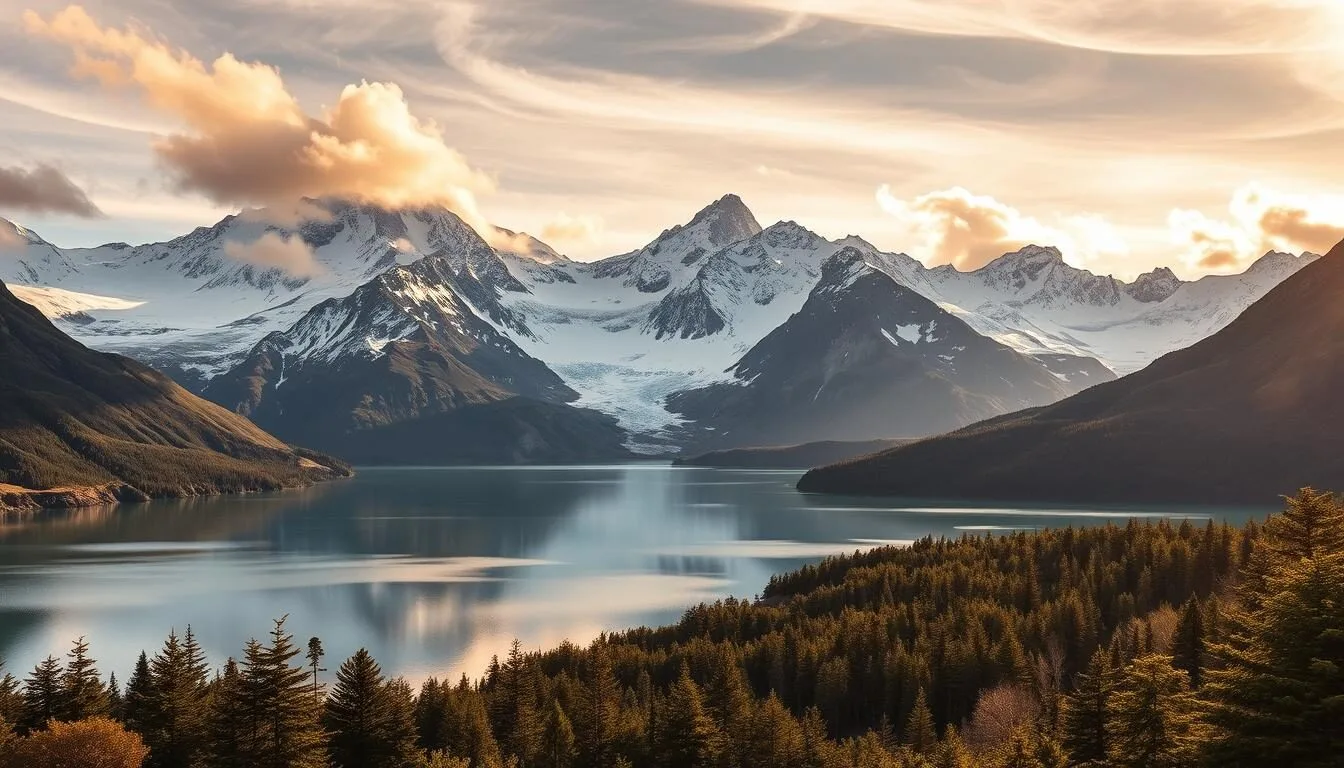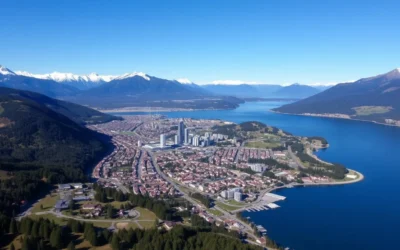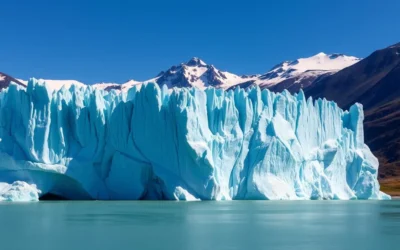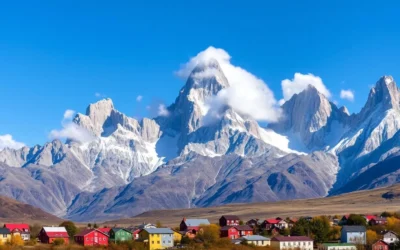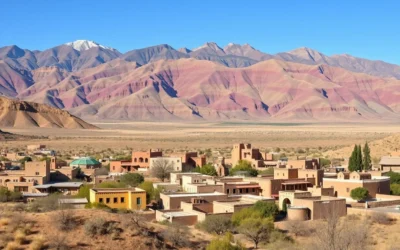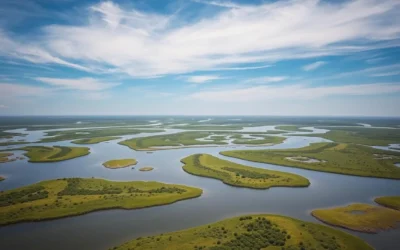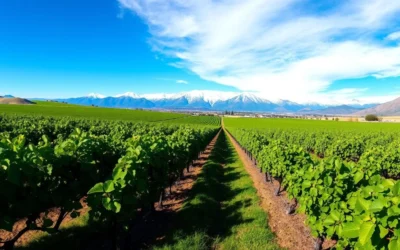✓ Accommodations✓ Flights✓ Rental Cars
Imagine standing at the edge of a turquoise lake, surrounded by towering mountains and untouched forests. This is Patagonia, a vast and sparsely populated region at the southern tip of South America.
As you venture into this incredible region, you’ll be met with breathtaking landscapes, from jagged mountain peaks to massive glaciers calving into icy waters. Whether you’re planning a trekking adventure, a wildlife watching trip, or a scenic drive, Argentina’s Patagonia has something for every kind of traveler.
Get ready to explore a land of extremes, where pristine wilderness and dramatic mountain ranges create unforgettable experiences. With this guide, you’ll learn about the best time to visit, how to get around, and the must-see destinations that make Patagonia a bucket-list place for adventure seekers worldwide.
Discovering the Magic of Patagonia, Argentina
As you venture into Patagonia, Argentina, you’ll uncover a world of untouched beauty and adventure. The region offers an incredible diversity of experiences, from exploring ancient glaciers and hiking near jagged mountains to encountering unique wildlife like guanacos, pumas, and penguins in their natural habitats.
Patagonia’s vast wilderness spans both Chile and Argentina, with the Andes mountains serving as a natural dividing line. The region is home to some of South America’s most spectacular scenery, including the famous Torres del Paine in Chile and Los Glaciares National Park in Argentina, both UNESCO World Heritage sites.
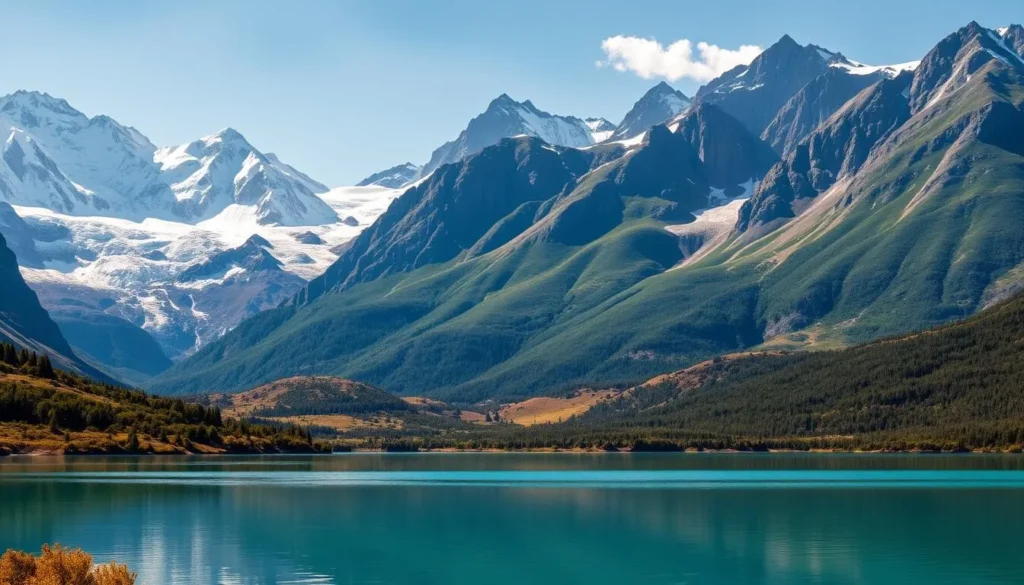
You’ll discover that Patagonia is a place of extremes – where howling winds can suddenly give way to perfect stillness, where barren steppes contrast with lush forests, and where the scale of nature makes you feel wonderfully small. This magical region at the southern tip of South America offers adventures for every type of traveler.
| Experience | Location | Highlights |
|---|---|---|
| Hiking | Torres del Paine, Los Glaciares | Jagged mountain peaks, glaciers, and scenic trails |
| Wildlife Watching | Península Valdés, Tierra del Fuego | Guanacos, pumas, penguins, and other unique species |
| Glacier Exploration | Los Glaciares National Park | Ancient glaciers, glacier trekking, and scenic viewing |
In Patagonia, you’ll find a world of adventure and natural beauty, making it an unforgettable destination for any traveler.
When to Visit Patagonia: Seasons and Weather
The ideal time for a trip to Patagonia largely depends on your preferences and the activities you have planned. Patagonia’s climate is known for being unpredictable, with significant variations across different seasons.
Summer in Patagonia (December-February)
Summer in the Southern Hemisphere brings warm weather to Patagonia, with temperatures ranging from 60-70°F (15-22°C), making it ideal for hiking and outdoor activities. The long daylight hours, extending until 10 pm, allow for more exploration time. However, it’s the peak tourist season, especially in January, so it’s crucial to book accommodations and popular treks like the W Trek in advance.
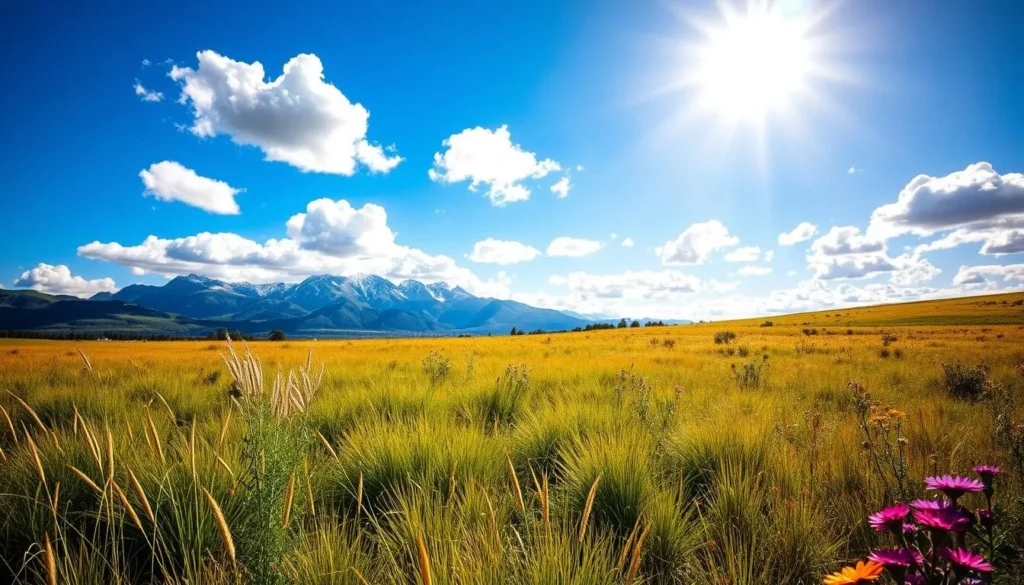
Shoulder Seasons: Spring and Fall
Spring (September-November) and fall (March-May) are considered shoulder seasons in Patagonia. These periods offer fewer crowds and beautiful transitional landscapes. Although the weather can be more variable, with sudden changes, the scenery is particularly stunning during these times. If you’re looking for a balance between comfortable weather and smaller crowds, these seasons might be the best time for your trip.
Winter Adventures (June-August)
Winter transforms Patagonia into a snow-covered wonderland, with temperatures dropping to 20-50°F (-7 to 10°C). This season is perfect for skiing in Bariloche, but some hiking trails may be limited. The clear skies during winter offer excellent conditions for photography, and the lack of crowds can make for a more serene experience.
In conclusion, the best time to visit Patagonia depends on your priorities. Whether you’re looking for warm weather, outdoor activities, or serene landscapes, Patagonia has something to offer in every season.
How to Get to Patagonia, Argentina
Getting to Patagonia involves choosing from a range of travel options, each with its unique advantages. Whether you’re looking for speed, scenery, or adventure, there’s a way to reach this stunning region that suits your preferences.
Flying to Patagonia
The most convenient way to reach Patagonia is by flying into one of the regional airports after connecting through Buenos Aires or Santiago, Chile. Major gateway airports include El Calafate for Los Glaciares National Park, Ushuaia for Tierra del Fuego, Bariloche for the Lake District, and Punta Arenas in Chile for Torres del Paine. Flight times from Buenos Aires range from 2.5 to 3.5 hours, making it a quick way to start your trip.
Overland Travel Options
If you prefer to travel overland, long-distance buses connect major Patagonian towns, though journeys can be lengthy. For example, the trip from Buenos Aires to Bariloche takes about 24 hours, while Bariloche to El Chaltén can take upwards of 25 hours. This option allows you to see the countryside and enjoy the scenic views along the way.
Getting Around Within Patagonia
For getting around within Patagonia, renting a car gives you the most flexibility to explore at your own pace. The legendary Ruta 40 in Argentina and the Carretera Austral in Chile offer spectacular driving routes spanning hundreds of miles. You can drive for a day or more, stopping at attractions and enjoying the breathtaking landscapes.
| Travel Option | Duration | Scenic Value |
|---|---|---|
| Flying | 2.5-3.5 hours | High |
| Bus (Buenos Aires to Bariloche) | 24 hours | Very High |
| Driving (Ruta 40 or Carretera Austral) | Varies | Exceptional |
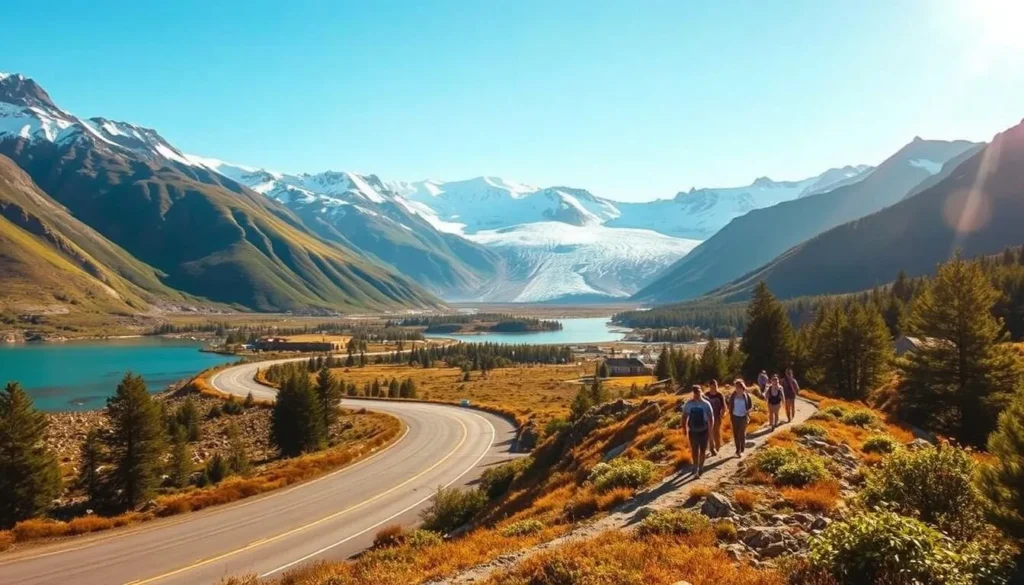
To reach Patagonia itself, you can take a ferry over the Strait of Magellan at different points, such as from Punta Arenas to Bahia Chilota or from Punta Delgada to Bahia Azul. The drive down from Punta Delgada along the 257-CH offers chances of spotting Guanaco and even flamingos on the many lakes, making the journey part of the adventure.
What to Pack for Your Patagonian Adventure
Patagonia’s unique environment demands a thoughtful approach to packing for your trip. The weather in Argentine Patagonia can be very unpredictable, with temperatures ranging from 20 to 70°F (-7 to 22°C) depending on the time of year you decide to visit.
To prepare for your adventure, it’s essential to pack versatile, layerable clothing that can handle rapid temperature changes, strong winds, and occasional precipitation. Essential items include waterproof hiking boots, moisture-wicking base layers, a warm mid-layer like a fleece or down jacket, and a waterproof/windproof outer shell.
| Item | Description |
|---|---|
| Waterproof Hiking Boots | Broken in before your trip to prevent blisters |
| Moisture-wicking Base Layers | To keep you dry and comfortable |
| High SPF Sunscreen | Protect against intense UV rays |
Don’t underestimate the power of the Patagonian sun—pack high SPF sunscreen, polarized sunglasses, and a wide-brimmed hat. A valuable tip is to pack a buff or neck gaiter to protect against wind. For your trip, consider renting specialized equipment like crampons for glacier hikes once you arrive.
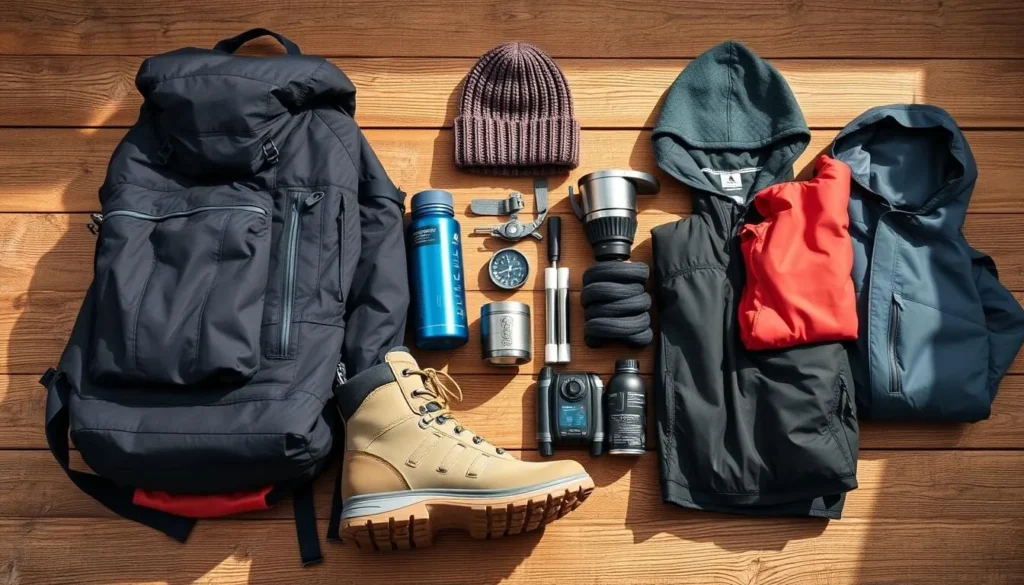
Explore El Chaltén: Argentina’s Trekking Capital
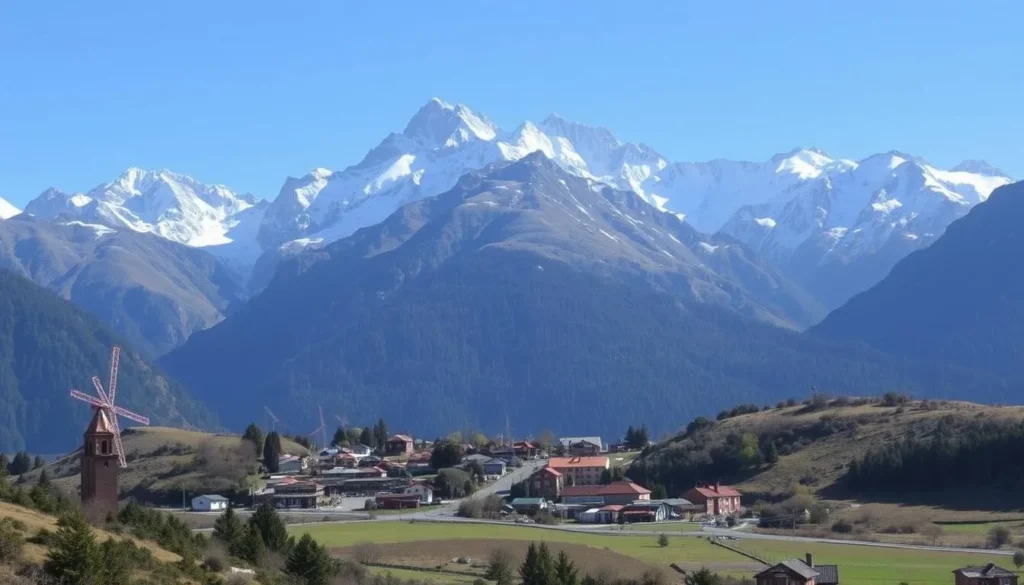
As Argentina’s trekking capital, El Chaltén offers a diverse range of hiking trails amidst breathtaking landscapes. Hemmed in between the Rio Fitz Roy and the rugged Fitz Roy mountain range, this picturesque village is a haven for outdoor enthusiasts.
El Chaltén is perfectly positioned within Parque Nacional Los Glaciares, providing direct access to spectacular trails without requiring permits or guides. The town itself is relatively young, founded in 1985, but has developed into Argentina’s premier trekking destination.
Best Hikes Around El Chaltén
The area around El Chaltén offers some of the most iconic hikes in Patagonia. The famous Laguna de los Tres trail (12 miles round trip) brings you face-to-face with the magnificent Fitz Roy massif and its surrounding peaks. Other popular day hikes include the Laguna Torre trail, offering views of the needle-like Cerro Torre, and the Loma del Pliegue Tumbado trail, which rewards hikers with panoramic vistas of both the Fitz Roy and Torre mountain ranges.
Where to Stay and Eat in El Chaltén
El Chaltén has a range of accommodation options, from backpacker hostels to boutique lodges, ensuring that there’s something for every budget. The town also boasts an excellent dining scene, with restaurants serving hearty post-hike meals.
The hiking season in El Chaltén runs from October to April, with the trails becoming increasingly busy during the peak summer months (December-February). Visiting during the shoulder seasons can offer fewer crowds and the chance to see beautiful spring wildflowers or fall foliage.
Marvel at Perito Moreno Glacier
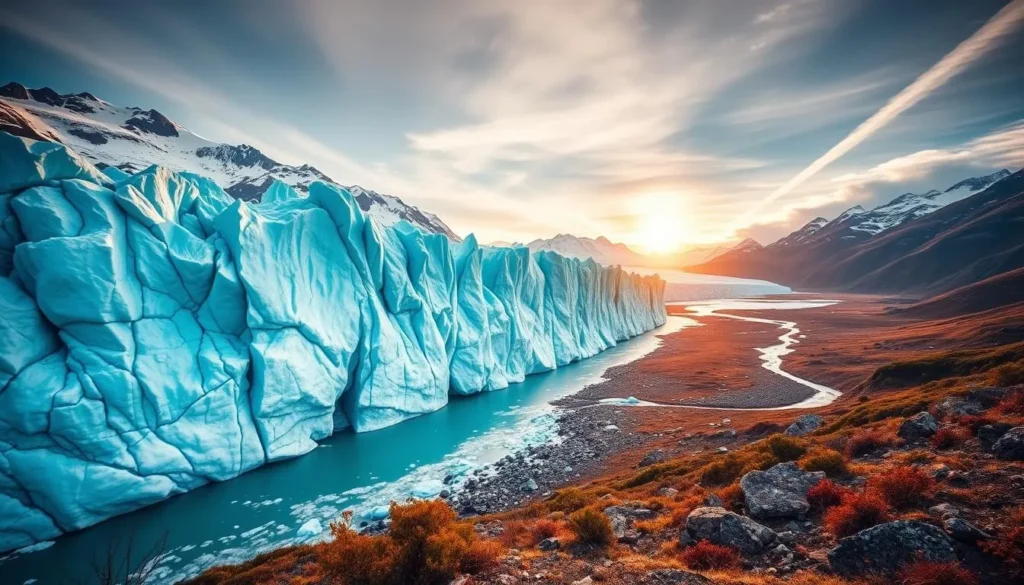
As you step into the realm of Perito Moreno Glacier, you’ll be met with an unmissable spectacle of ice and nature. This natural wonder is one of the few advancing glaciers in the world, moving forward at a rate of around 2 meters (6 feet) per day.
The glacier’s immense size is awe-inspiring, stretching over 30 kilometers long, 5 kilometers wide, and 60 meters high. You’ll have the opportunity to witness the glacier’s dynamic landscape, where massive chunks of ice calve into Lago Argentino with thunderous crashes.
Glacier Trekking Experiences
For a more immersive experience, you can book a mini-trekking tour that equips you with crampons to walk directly on the glacier’s surface. This unique experience allows you to appreciate the glacier’s immense scale and beauty up close.
Viewing the Glacier from Different Perspectives
The Perito Moreno Glacier is accessible via a sophisticated system of viewing platforms and walkways, allowing you to observe the 240-foot-high ice wall from various angles. You can also take a boat tour that brings you remarkably close to the glacier’s face, providing a breathtaking view of the ice wall.
Visiting in the afternoon is recommended to avoid the morning tour bus crowds and increase your chances of witnessing the spectacular calving events, which occur more frequently as the day warms up. Located approximately 50 miles from El Calafate in Los Glaciares National Park, the glacier’s proximity makes it an ideal day trip.
Discover El Calafate: Gateway to Los Glaciares
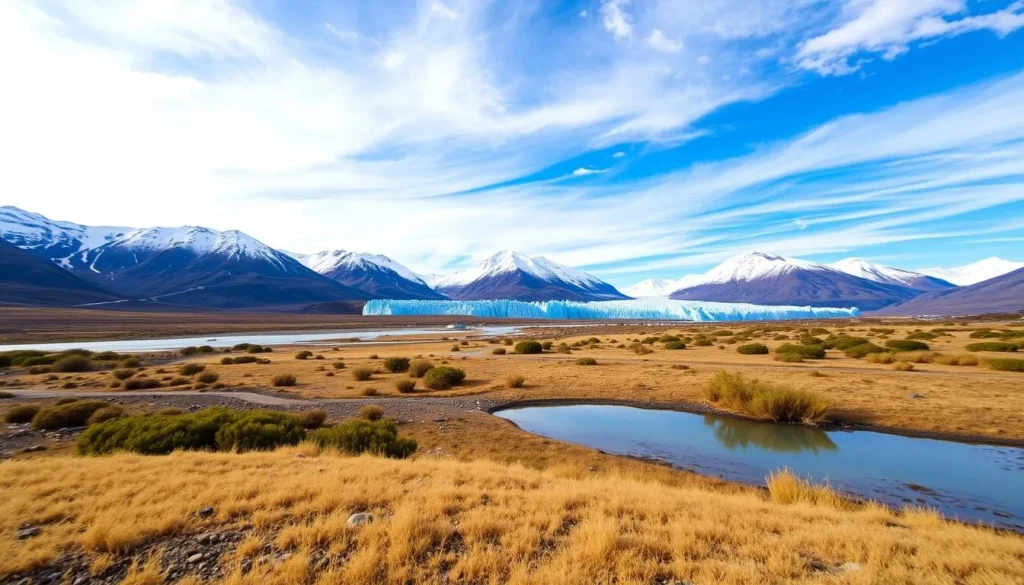
As the gateway to Los Glaciares National Park, El Calafate offers an unforgettable Patagonian experience. You’ll likely use El Calafate as your base for exploring the national park, as this tourist-friendly town offers all the amenities you need while maintaining a charming Patagonian character.
The place has grown significantly in recent decades to accommodate visitors to Perito Moreno Glacier, developing from a small outpost into a thriving destination with quality restaurants, accommodations for all budgets, and numerous tour operators.
Beyond serving as a gateway to glaciers, El Calafate itself offers interesting attractions including the Glaciarium (an interactive ice museum), bird watching at Laguna Nimez Reserve, and opportunities to learn about traditional estancia (ranch) life. On a day trip from El Calafate, you can visit not only Perito Moreno but also less-visited glaciers like Upsala and Spegazzini, which can be reached via boat tours across Lago Argentino.
El Calafate is well-connected by air to Buenos Aires and other Patagonian destinations, making it an essential stop on most Patagonian itineraries and a convenient place to rest between adventures. Visiting this part of southern Patagonia is a must for anyone looking to witness the majesty of Perito Moreno Glacier and experience the natural beauty of Los Glaciares National Park.
Experience Tierra del Fuego: The End of the World
At the end of the world, Tierra del Fuego offers an unforgettable experience of untamed wilderness and breathtaking scenery. You’ll feel like you’ve reached the edge of civilization in this southernmost province of Argentina, home to the famed “end of the world” at the tip of South America.
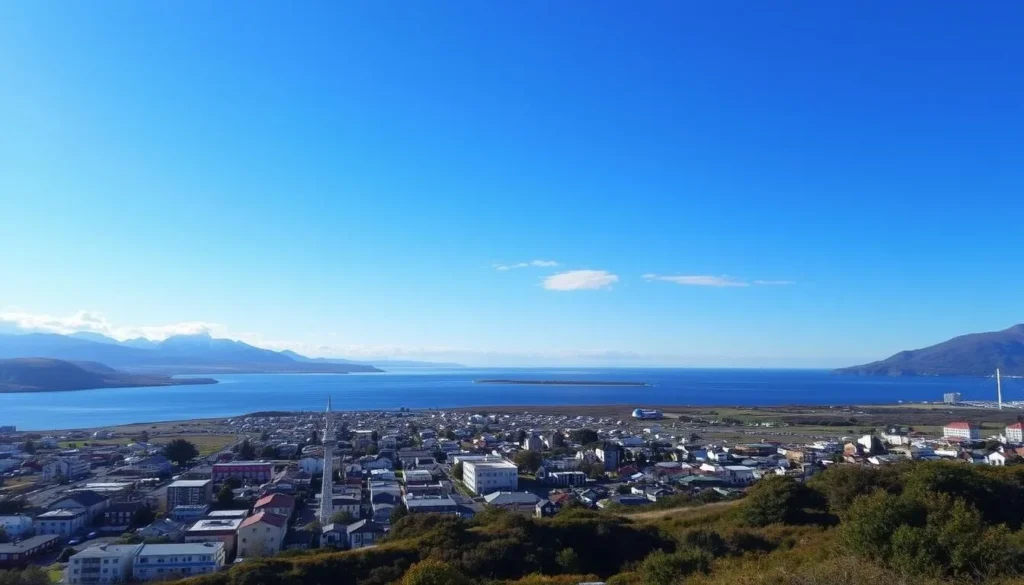
Ushuaia: The Gateway to Adventure
Ushuaia, the world’s southernmost city, serves as the main gateway to Tierra del Fuego and offers a unique blend of frontier town charm and modern amenities against a dramatic backdrop of mountains meeting the Beagle Channel. The city is the departure point for Antarctic expeditions and cruises through the Beagle Channel, where you can spot sea lions, cormorants, and even penguins while learning about the region’s fascinating maritime history.
Wildlife Encounters
Wildlife enthusiasts will be thrilled by encounters with unique species including Magellanic and king penguins, guanacos, Andean condors, and marine mammals that thrive in this remote ecosystem where the Atlantic and Pacific Oceans meet. Tierra del Fuego National Park, just 12 km from Ushuaia, offers excellent hiking trails through subantarctic forests, including the popular Coastal Path and more challenging routes like Cerro Guanaco that reward you with panoramic views.
The region’s diverse wildlife and ecosystems make it an adventurer’s paradise. Whether you’re cruising through the Beagle Channel on a boat tour or hiking through the national park, every moment in Tierra del Fuego is a chance to experience the untouched beauty of the “end of the world.”
Visit Bariloche and the Lake District
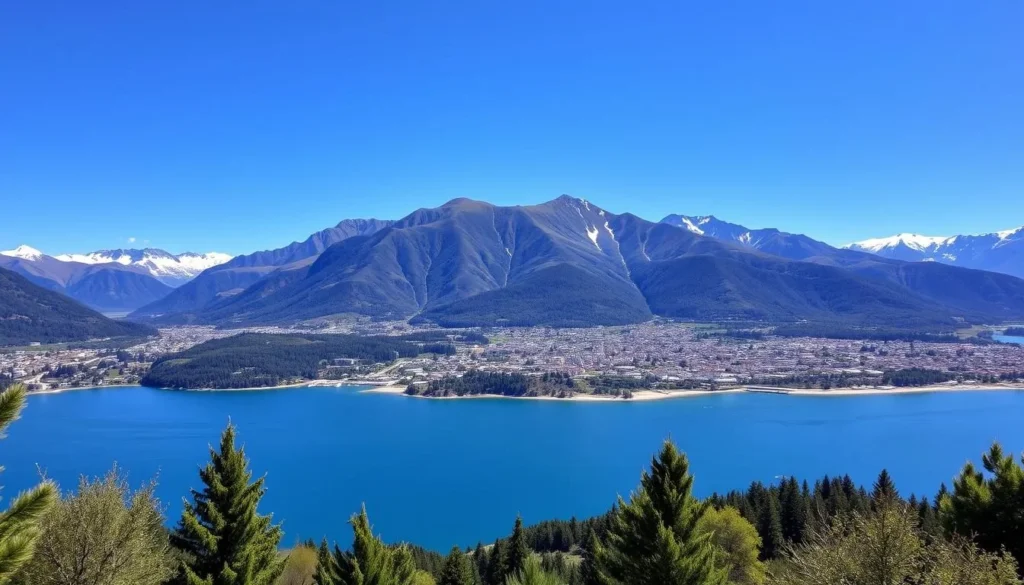
Bariloche, known as Patagonia’s most charming town, offers a unique blend of Alpine architecture and breathtaking natural beauty. You’ll discover a completely different side of Patagonia in Bariloche and the Lake District, where Alpine-inspired architecture, chocolate shops, and pristine lakes create an atmosphere that feels more European than South American.
San Carlos de Bariloche sits on the shores of the massive Nahuel Huapi Lake and serves as the perfect base for exploring Nahuel Huapi National Park, Argentina’s oldest national park, with its network of scenic hiking trails and viewpoints. The surrounding mountains offer numerous opportunities for outdoor adventures.
In summer (December-February), Bariloche is a place for hiking, mountain biking, kayaking, and swimming at beaches along the lake shores. In contrast, winter (June-September) transforms Bariloche into Argentina’s premier skiing destination at Cerro Catedral.
Don’t miss the famous “Circuito Chico,” a scenic 60 km loop that showcases the region’s most spectacular viewpoints, including the panoramic vista from Cerro Campanario. Bariloche is also known for its culinary scene, particularly its Swiss-influenced chocolate and craft beer, making it a delightful town to indulge after days of outdoor adventure.
Encounter Wildlife on Península Valdés
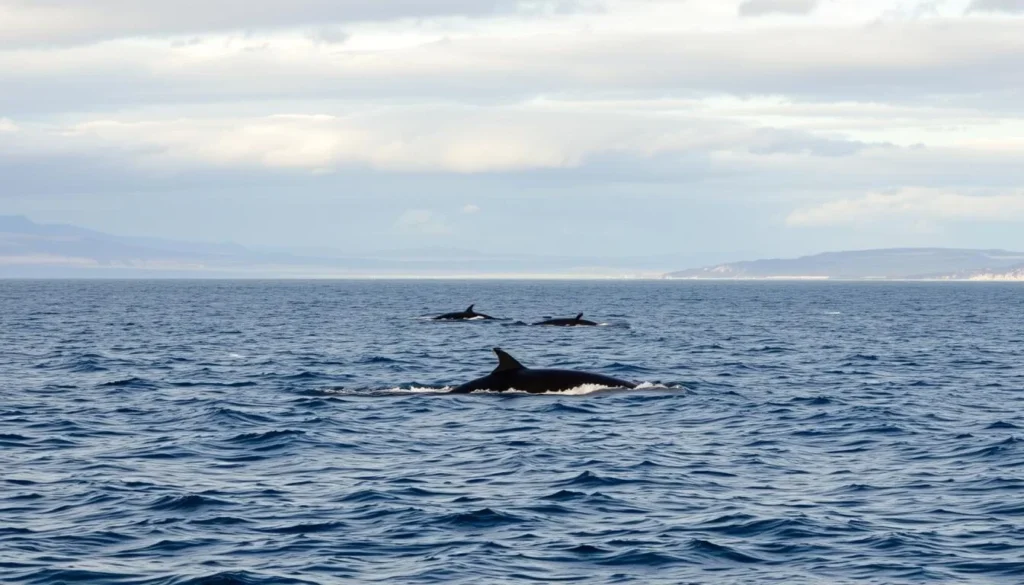
Located on Argentina’s Atlantic coast, Península Valdés is a UNESCO World Heritage Site renowned for its diverse and abundant wildlife. This protected area is a crucial habitat for marine mammals and birds, making it a must-visit destination for nature enthusiasts.
One of the main attractions at Península Valdés is the southern right whale population, which arrives to breed in the protected bays between June and December. Taking a day trip from Puerto Madryn to the village of Puerto Pirámides allows you to go on a boat trip in search of these magnificent creatures.
Beyond whales, the peninsula is home to a variety of wildlife, including massive elephant seal colonies, sea lions, and orcas. You can observe these animals from the cliffs at Punta Delgada, the gravel beach at Punta Cantor, and the remote Punta Norte.
Bird enthusiasts will be delighted by the diversity of species, including Magellanic penguins at Punta Tombo, flamingos, cormorants, and numerous migratory shorebirds. With over 180 species of seabirds documented, Península Valdés is a site of significant ornithological interest.
Whether you choose to explore the peninsula on a guided tour or venture out on your own, Península Valdés is an unforgettable experience. As a UNESCO World Heritage site, it is a place where you can truly connect with nature and witness the incredible biodiversity of our planet.
Drive the Legendary Ruta 40
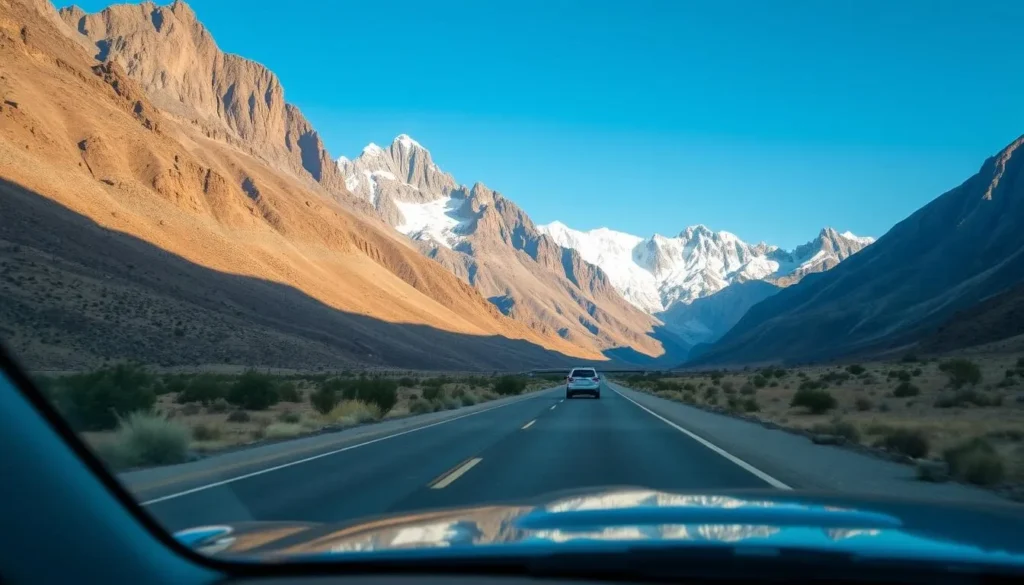
Ruta40 is more than just a road; it’s an experience that takes you through the heart of Argentina’s stunning natural beauty. Stretching from Cabo Vírgenes in southeast Patagonia to the border with Bolivia, this legendary route is Argentina’s ultimate road trip, offering an epic journey of over 3,100 miles.
The stretch between El Calafate and Bariloche, covering approximately 910 miles, is particularly scenic, taking you through diverse landscapes from barren steppes and dramatic mountain passes to lush valleys and crystal-clear lakes. This journey warrants at least 10 days of your time, allowing you to stop at Patagonia’s biggest attractions en route.
- You’ll experience the ultimate Patagonian road trip on Ruta40, Argentina’s iconic highway that runs parallel to the Andes Mountains.
- The most scenic stretch for travelers is between El Calafate and Bariloche, which takes you through diverse landscapes.
- This legendary route connects many of Patagonia’s highlight destinations, allowing you to create your own adventure.
- While much of Ruta40 is now paved, some sections remain gravel, and the road still retains its wild character.
- Plan for at least 10 days to enjoy this iconic drive, bring a spare tire, download offline maps, and fill up your gas tank whenever possible.
As you drive along Ruta40, the boundless sky and the vast pampas stretching to the horizon are broken up by occasional sightings of wandering guanaco and ñandú (rhea) and glimpses of distant, snow-covered mountain peaks. Come in search of adventure, with a spare tire and plenty of food – and be prepared for the lack of cell phone coverage between remote towns.
Experience Gaucho Culture on Patagonian Estancias
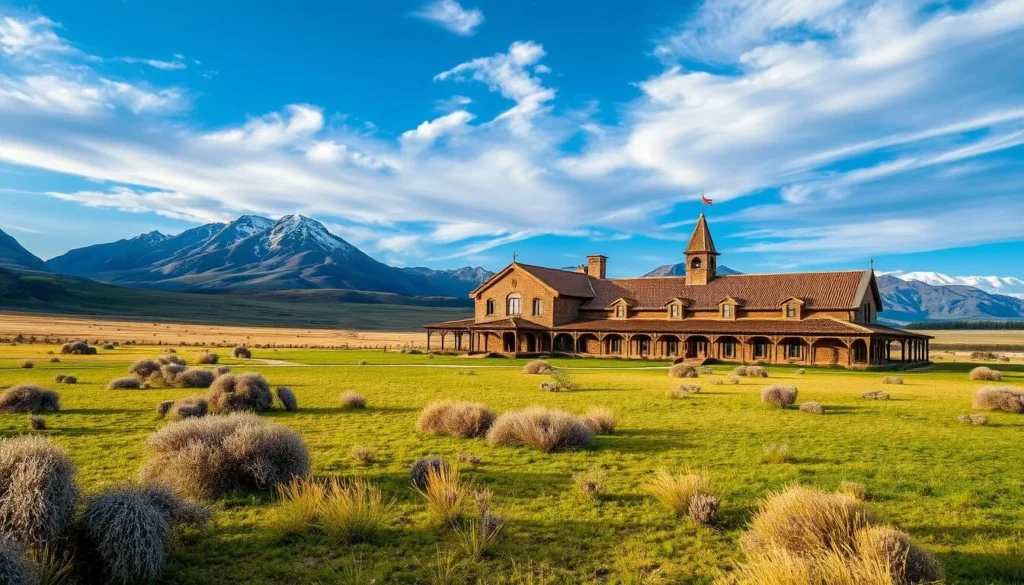
Immerse yourself in the authentic gaucho culture of Patagonia by staying at a traditional estancia. These rural ranches offer a unique opportunity to experience the region’s rich heritage and way of life. You’ll have the chance to participate in traditional asados, go horseback riding across the pampas, and help with farm chores.
Many working estancias now welcome visitors for day trips or overnight stays, providing a glimpse into the gaucho way of life that has remained unchanged for generations on these vast farms. You’ll be treated like a person of the land, learning about the history and cultural traditions that have shaped this remote region.
Some popular estancias near El Calafate include Estancia Cristina and Estancia Nibepo Aike, while those near Puerto Natales in Chile offer breathtaking views of Torres del Paine’s peaks. When you stay at one of these estancias, you’ll experience the warm hospitality of the gauchos and create unforgettable memories of your time in Patagonia.
These rural experiences provide a perfect complement to Patagonia’s wilderness adventures, giving you insight into the human history and cultural traditions that have shaped this remote region for over a century.
Explore Prehistoric Art at Cueva de Las Manos
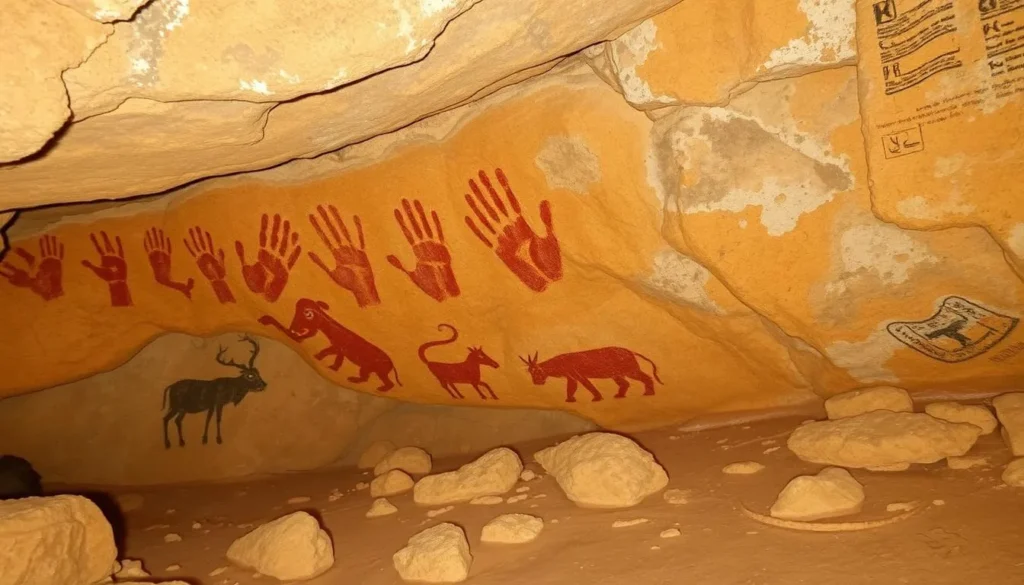
Step back in time and explore the fascinating world of prehistoric art at Cueva de Las Manos, a UNESCO World Heritage site. Located in a remote canyon along the Río Pinturas in Santa Cruz Province, this archaeological treasure is a detour worth taking from Ruta 40.
Cueva de Las Manos, which translates to “Cave of Hands,” features over 800 well-preserved images in reds and ochres, primarily handprints, as well as hunting scenes and abstract designs. A 45-minute guided tour is required to visit the site, providing valuable context about the techniques used to create the art and the cultures that once inhabited the area.
- You’ll step back in time 9,000 years when visiting Cueva de las Manos, containing one of South America’s most important collections of prehistoric art.
- The site features hundreds of stenciled handprints in various colors, which have survived due to the region’s dry climate.
- Beyond the iconic negative handprints, you’ll see hunting scenes depicting guanacos and evidence of ancient hunter-gatherer cultures.
- A guided tour provides fascinating context about the techniques used to create the art and what archaeologists have learned about the people who left these remarkable traces.
This often-overlooked heritage site offers a profound connection to Patagonia’s human history, making it a perfect stop if you’re driving between El Calafate and northern Patagonian regions.
Discover Welsh Heritage in Chubut Province
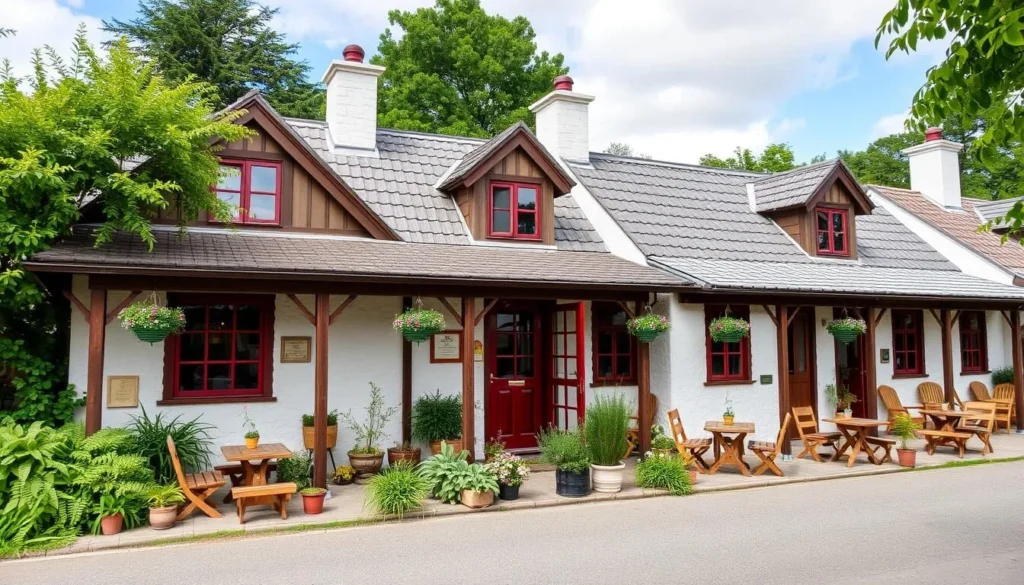
As you venture into the heart of Patagonia, you’ll uncover a fascinating cultural gem – the Welsh heritage in Chubut Province. The towns of Gaiman and Trevelin are at the forefront of this unique cultural experience, offering a blend of Welsh and Patagonian traditions.
When you visit Gaiman and Trevelin, you’ll be treated to an array of traditional Welsh tea houses. At Nain Maggie in Trevelin, you can enjoy a warm cup of tea accompanied by homemade bread, scones, and the rich, dense torta negra (black cake). This is a perfect time to relax and immerse yourself in the local culture.
In these charming towns, you’ll still hear Welsh being spoken alongside Spanish, and see bilingual street signs. You can also visit museums that document the remarkable story of the Welsh pioneers who transformed the arid Patagonian landscape.
To make the most of your trip, plan your visit to coincide with the Eisteddfod, a traditional Welsh cultural festival held annually in October. This vibrant celebration features music, poetry, and dance competitions, showcasing the living Welsh traditions that have been maintained for over 150 years.
By experiencing the Welsh heritage in Chubut Province, you’ll gain a deeper understanding of Patagonia’s diverse history and the people who call this place home. Whether you’re sipping tea in a traditional teahouse or attending the Eisteddfod, you’ll be creating unforgettable memories in this unique corner of Argentina.
Practical Tips for Traveling in Patagonia, Argentina
As you prepare for your adventure in Patagonia, Argentina, understanding the practicalities can greatly enhance your travel experience. Whether you’re planning to explore the stunning landscapes of El Chaltén, visit the majestic Perito Moreno Glacier, or experience the unique culture of the region, being prepared is key.
Budgeting for Your Trip
Budgeting is a crucial aspect of planning your trip to Patagonia. You should budget around £20 – £50 per person per day for dining out and drinks. National Park fees range between £7 – £25 for foreign visitors. For accommodations, you can expect to pay between £5 – £20 per person per night for camping, while private rooms in Airbnb or hotels range from £20 – £400, depending on your choice of luxury. When renting a car, consider the costs of insurance and border crossing permits if you plan to travel between Chile and Argentina.
| Expense Category | Low Estimate (£) | High Estimate (£) |
|---|---|---|
| Dining out and drinks per person per day | 20 | 50 |
| National Park fees for foreign visitors | 7 | 25 |
| Camping per person per night | 5 | 20 |
| Private room in Airbnb or hotel | 20 | 400 |
Safety and Communication
Safety and communication are vital when traveling in Patagonia. It’s a practical tip to bring enough cash, as ATMs can be unreliable in remote areas. Consider getting a local SIM card for data, although coverage can be limited. Allow much more time than you think you’ll need for your trip, as distances are vast and weather conditions can cause delays.
Local Customs and Etiquette
Understanding local customs and etiquette can enhance your interactions with the local community. For example, when visiting estancias or local homes, it’s customary to bring a small gift, such as wine or chocolates. Being respectful of the environment and local traditions will make your trip more enjoyable and meaningful.
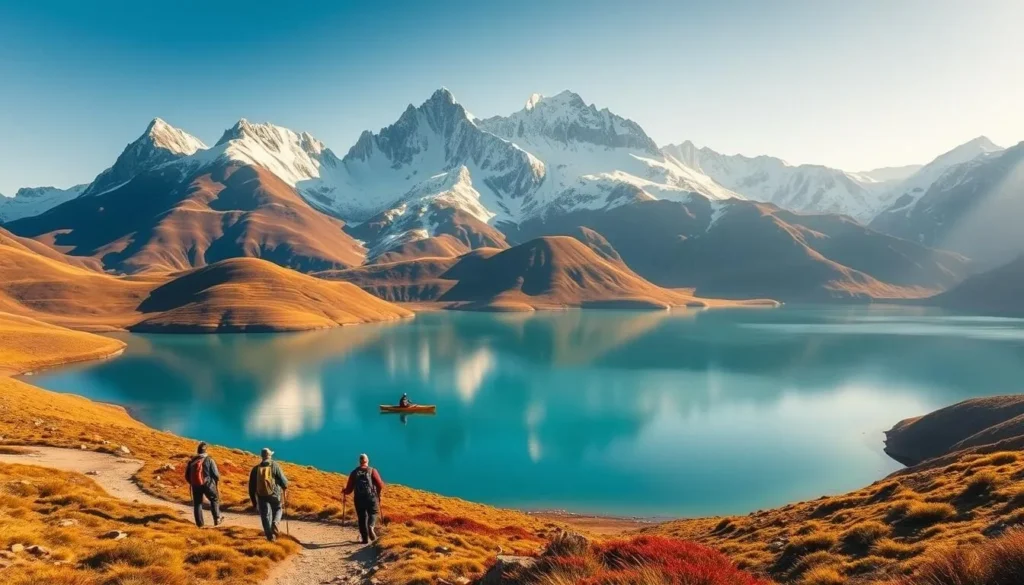
By considering these practical tips, you can ensure a more enjoyable and stress-free trip to Patagonia, Argentina. Whether you’re renting a car to explore the region or using public transport to get around, being prepared will allow you to make the most of your time and fully appreciate the beauty of Patagonia.
Conclusion: Your Unforgettable Patagonian Journey
Patagonia, Argentina, beckons with its untouched beauty, offering an unforgettable journey for those who venture into its vast expanses. As you explore this remarkable region, you’ll discover why it’s considered one of the world’s premier adventure destinations.
From the iconic peaks of Torres del Paine National Park and Fitz Roy to the advancing ice of Perito Moreno Glacier, Patagonia’s natural wonders will leave you in awe. Whether you base yourself in charming towns like El Chaltén, El Calafate, or Puerto Natales, or rent a car to explore the legendary Ruta 40, you’ll experience unforgettable adventures in every season.
Remember, the best time to visit depends on your interests. Summer offers ideal hiking conditions but crowds, while spring and fall provide fewer people and beautiful landscapes. As you plan your trip, give yourself plenty of time to fully immerse yourself in this remarkable region at the end of the world.
With its diverse glaciers, hiking trails, and authentic cultural experiences, Patagonia rewards travelers with memories that last a lifetime. So pack your bags, grab your hiking boots, and get ready for an adventure of a lifetime in this incredible corner of Chile Argentina.
The above is subject to change.
Check back often to TRAVEL.COM for the latest travel tips and deals.
